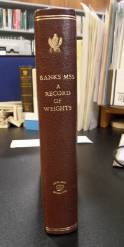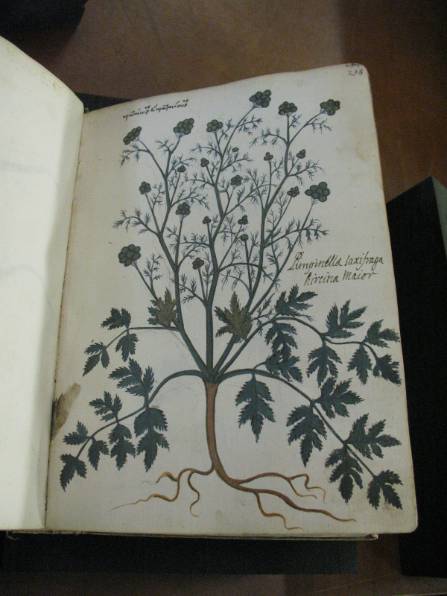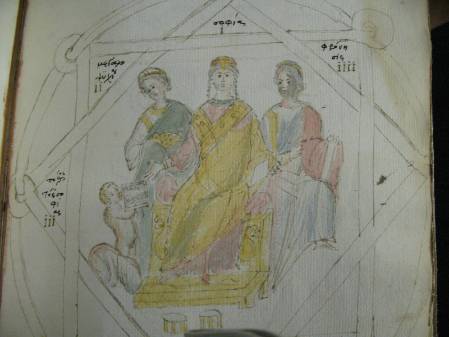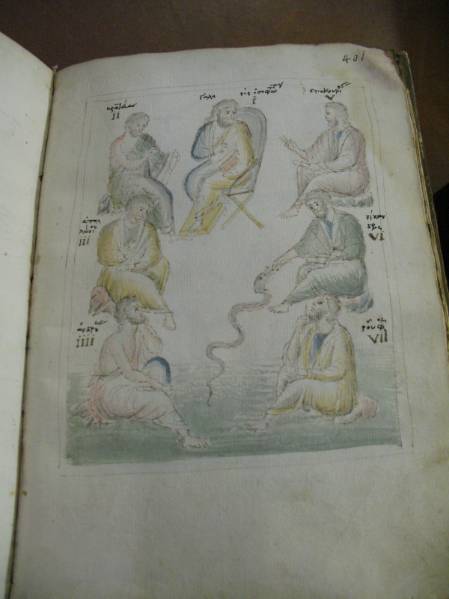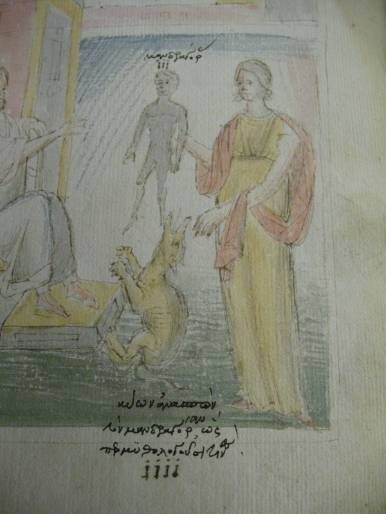"Evidently a record of weights" - a somewhat curious title but not a surprising one for this manuscript volume from the Banksian collection in the Botany Library from the bequest of Sir Joseph Banks (1743-1820).
It is assumed that they are the weights of some of the visitors to Banks' residence at 32 Soho Square where he lived from 1777 until his death. It was also in 1777 that Banks began his long association with Jonas Dryander who's name appears in the front of the volume.
This alphabeticaly arranged manuscript notebook of people's weights was started with some vigour on St. Valentines Day in 1778 with that of Lord Athlone. The final "weigh-in" recorded was Mr Amiot in August 1814.
Lord Athlone's weight is given as "13 8 1/2" and is immediatedly followed by his wife, Lady Athlone, who weighed in on the same day almost 2 stones heavier at "15 10 1/2".
The manuscript also charts Banks' own weight and those members of his family namely his mother "Mrs Banks of Chelsea", his wife "Mrs Banks" and his sister, Sarah Sofia "Miss Banks" who lived with them in Soho Square. Once Banks became a Baronet in 1771 his entry changed accordingly to "Sir Joseph Banks" and his wife to "Lady Banks".
The volume is interesting for many reasons in that it documents some of the guests to Banks' house and include many important and influential people of the time. They include :
Alexander Dalrymple (1737-1808), Scottish geographer and Hydrographer of the British Admiralty (13 stone, 2 pounds on Oct. 29, 1779)
Georg Forster (1754-1794), German naturalist who travelled on Cook's second voyage to the Pacific (10 stone, 3 pounds on Febr. 27, 1778)
Abbe Fontana (1730-1805), founder of modern toxinology (10 stone, 13 pounds on Aug. 18, 1778)
Charles Greville (1749-1809), MP for Warwick and authority on tropical plant gardening and collector of antiquities (10 stone, 6 1/4 pounds on Feb 14, 1778). On a return visit on March 19, 1781 he was slightly heavier at 10 stone, 9 pounds.
Nikolaus von Jacquin (1727-1817), eminent scientist who studied medicine, chemistry and botany (10 stone, 4 pounds on June 19, 1789 with an increase of 2 pounds upon his next visit on Dec.27, 1789).
James Lee (1715-1795), Scottish nurseryman (12 stone, 8 1/2 on Sept. 20, 1778)
Reverend John Lightfoot (1735-1788), English conchologist and botanist (12 stone on May 11, 1778).
Major James Rennell (1742-1830), English geography and pioneer of Oceanography (upon his first visit on March 20, 1781 he weighted 9 stone 11. The most weighed visitor at a total of eight weigh-ins, his final entry on April 21, 1789 was 9 stone, 4 1/2 pounds).
Carl Peter Thunberg (1743-1828), Swedish naturalist and apostle of Linnaeus (9 stone, 12 pounds on Dec. 25, 1778)
The weights are not all of humans though, Mab the dog appears three times and a Terrapin from the Galapagos also features twice in the volume :
It is not clear why the weights of visitors (and animals) were documented, but Banks was regarded as a born adminstrator and valued classificatory order. In December 1799, he had compiled a set of tables of money, weights and measures of all the trading nations at the time and his interest in the international standardisation of weights and measures saw him invited to Paris by the French Government to confer with the Institut on the fundamental units of Weights and Measures.
Banks also performed the chairing role on the British Government's committee to review Britain's system of weights and measures from 1817-1819. Following their report, the imperial system of weights and measures was introduced in 1824.



